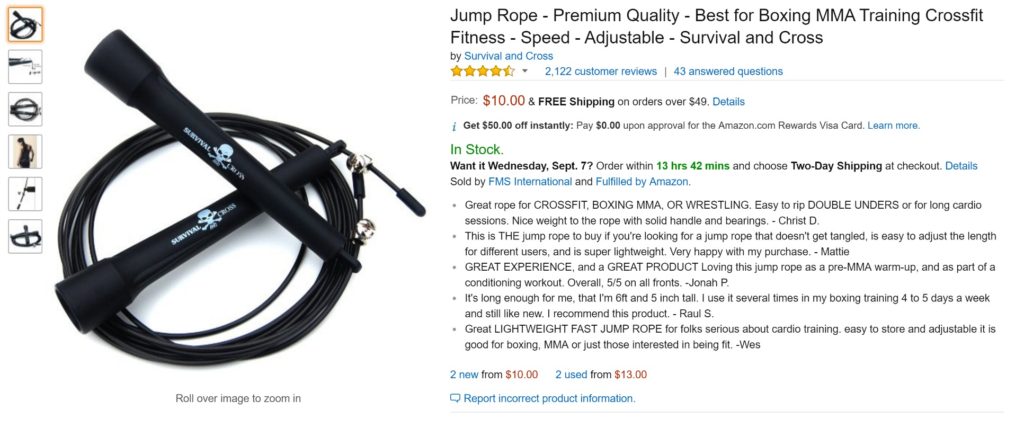
So many Amazon Sellers focus on retail arbitrage and retail arbitrage only. While shopping for clearance items and reselling them can be a great source of revenue, it locks you into what you can buy and sell that month. If you’re ready to create an Amazon business with true longevity, then you need to create a brand.
Here we’re covering tips for custom products and white labeling–whether you have a branded product available on Amazon already or are just getting started and leaping out of retail arbitrage for the first time.
Table of Contents
ToggleGet out of a product mentality
The first step to creating a recognizable, meaningful brand is to think more holistically. Most Sellers think only about the individual products.
How much can I buy it for?
How much can I sell it for?
How many can I find?
When you operate your Amazon business only on that granular level, you inhibit your own growth. Instead, try adopting an audience mentality. This means that you’ll start asking yourself questions about what your audience wants and needs.
Who is my audience?
How can I reach them?
What products do they need?
At the core of every strong brand is an audience. That audience can be centered around a subset of the population, a particular interest, or a specific need. However you choose to identify your target customer, make sure that it is as specific as possible.
Your brand cannot be random anymore–every product must now be completely relevant to your audience.
Pick meaningful brand details
How do you communicate to your audience so they respond? You’ll need a brand name, logo, colors, and imagery style.
The top tip you should walk away is this: your brand name needs to reveal information.
Amazon does not allow for much branding in their channel. All you can do is put your brand name in the product title and showcase the logo where it appears on the product. So you had better choose the name and logo wisely.
Think of the one thing you want customers to know about your brand. That it’s top quality or fun or effective or fast? Whatever that is, choose a name and logo whose style reflect that characteristic.
Register your brand with Amazon
If you’ve already mastered retail arbitrage, then you know that Amazon mixes product listing details, so that customers are presented with one page for a product that is offered from dozens of sellers.
When you register your brand with Amazon, you ensure that your unique product pages don’t get merged with similar items. That gives you full control over that page, something you would never get with shared pages–which sometimes present your images and another Seller’s title or any other possible combination.
You must first apply for the Brand Registry Program, then any product you list for that brand will that receive a unique Global Catalog Identifier (GCID) instead of an ASIN.
Develop a launch plan
The best thing about having your own branded product on Amazon is that you will always win the Buy Box. However, with no existing data, it may take a while to get those first orders rolling in and establish trust.
To remedy this, you should not leave everything to Amazon.
Instead, focus on building up two things:
- Your brand’s Facebook page
- An email subscriber list
Create a branded Facebook page (using your unique brand details and style) and post content to it everyday. Run paid ads to build up likes on the page. Then start offering early access coupons and require email signups to get them.
This way, when you launch your product–or if you’re relaunching a product that already exists—you have your initial base of first customers. It’s essential to have someone to advertise to outside of Amazon so you can get those critical first reviews.
If you’re a multi-channel seller, you’ll want to collect those email addresses with an email service provider. If you plan on staying only in the Amazon channel for now (but still recognize the value of capturing email addresses), you can do it the easy way with apps inside of Facebook.
Remember to always create emotional, compelling ads that will drive likes and sign-ups. No matter what you sell, make sure that anyone who sees your ads will feel something not nothing!
Display your brand in your listing
Once you’ve got a brand that matters to your audience (and you’ve built that audience up on Facebook), make sure that customers can recognize your products inside of Amazon.
Here’s an example of Survival and Cross’s best selling product, a crossfit jump rope:

Your product pictures should prominently feature your logo and you should put your brand name in the product listing.
Amazon doesn’t want you to simply paste logos on top of the photos. You can’t interrupt the white space with graphics unless they detail key product features. So for every angle that you shoot the product, make sure to position it in a way that the logo will show. (Your logo won’t be in every product shot because it likely isn’t visible from every angle, but make sure that at least half of the images show it.)
Also, any contextualized product images should match your brand’s unique style.
Work your brand name into the product description and add it prominently in any BOGO deals offered by your brand. Be sure to write your product descriptions in ways that will appeal to your customers–whether that style is short and to the point or elegant and inspirational.
Do you have any branded products for sale on Amazon? Let us know if you’ve used these strategies or others in the comments below!
Learn more about Refunds Manager here and sign up to never miss a post:
[email-subscribers namefield=”YES” desc=”” group=”Public”]



